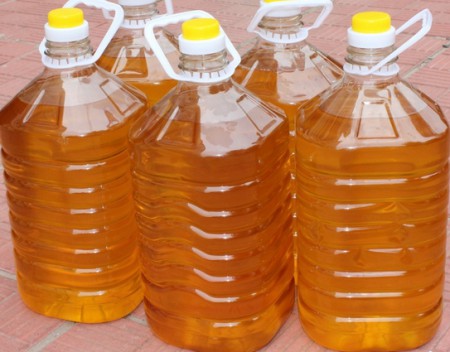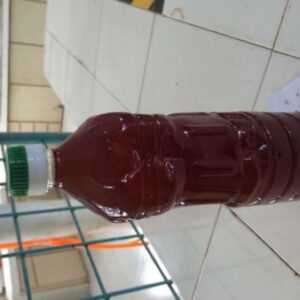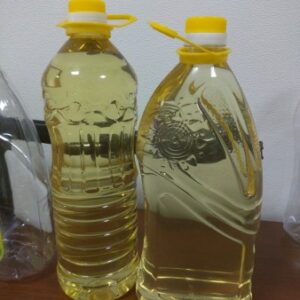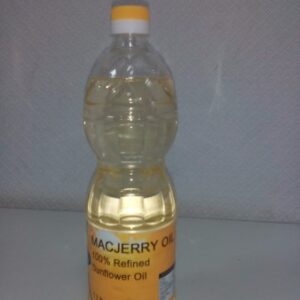Description
Used Cooking Oil (UCO): Used cooking oil is waste or spent cooking & frying oils collected from commercial food factories, restaurants, arena’s, casinos, schools, bakeries, etc. While the majority of used cooking oils are vegetable based, by no means should UCO be considered “waste vegetable oil” as there is inevitably some level of animla fat in UCO, which is naturally derived from the cooking process, and of course some resteraunts cook in fats rather than oils. Generally UCO should not be considererd yellow grease as it may not be fully rendered or meet the specification commonly associated with yellow grease.
Waste Vegetable Oil (WVO): WVO is simply another name for used cooking oil (restaurant grease) or in some cases may be used to refer to off spec or expired fresh oils that cannot be used/marketed as intended. WVO is generally used to refer to used cooking oils that are primarily vegetable oil based and have minimum or no animal fats from cooking process. Oil may or may not be processed and will have variable specifications for MIU and FFA. Pictured on the lower right is a product which has been skimmed to remove animal fats and saturated/hydrogenated fats and oils, and finely micron filtered. This would be considered a refined waste vegetable oil product.
Straight Vegetable Oil (SVO): SVO is a reference to refined/polished UCO or refined fresh oils which are used “straight” to fuel diesel engines. In this case, oil is not processed into biodiesel, rather oil is (generally) pre-heated to reduce viscosity and is then injected directly as diesel fuel. UCO/WVO that has not been processed to remove particulate and water is not suitable for use as SVO. Oils with high FFA are also not advisable to use as SVO as this may damage diesel equipment like injectors. People running SVO generally have some type of conversion kit installed which heats oil, either in tank, by injector/fuel line, or both. The picture on the right, at the bottom, is an example of what SVO quality UCO looks like. This product has FFA about 1-5% max and MIU generally <1%.
Uses for UCO, SVO and Yellow Grease:
There are many uses for UCO and yellow grease, with 2 primary markets. 1st is for processing into biofuels (svo or biodiesel) often referred to as biostock. The second and more traditional use is for blending into animal feed for cattle and poultry as yellow grease (only in-spec yellow grease with FFA 15% or below and MIU <2% is accepted in feed markets), Additional uses include dust suppression (roads, construction and drilling), and as furnace and boiler fuel.
Waste Vegetable Oil (WVO): WVO is simply another name for used cooking oil (restaurant grease) or in some cases may be used to refer to off spec or expired fresh oils that cannot be used/marketed as intended. WVO is generally used to refer to used cooking oils that are primarily vegetable oil based and have minimum or no animal fats from cooking process. Oil may or may not be processed and will have variable specifications for MIU and FFA. Pictured on the lower right is a product which has been skimmed to remove animal fats and saturated/hydrogonated fats and oils, and finely micron filtered. This would be considered a refined waste vegetable oil product.
Straight Vegetable Oil (SVO): SVO is a reference to refined/polished UCO or refined fresh oils which are used to fuel diesel engines. In this case, oil is not processed into biodiesel, rather oil is (generally) heated to reduce viscosity and is then used directly as diesel fuel. UCO/WVO that has not been processed to remove particulate and water is not suitable for use as SVO. Oils with high FFA are also not advisable to use as SVO as this may damage equipment like injectors. People running SVO generally have some type of conversion kit installed which heats oil, either in tank, by injector/fuel line, or both. The picture on the right, at the bottom, is an example of what SVO quality UCO looks like. This product has FFA about 1-5% max and MIU generally <1%.
Uses for UCO, SVO and Yellow Grease:
There are many uses for UCO and yellow grease, with 2 primary markets. 1st is for processing into biofuels (svo or biodiesel) often referred to as biostock. The second and more traditional use is for blending into animal feed for cattle and poultry as yellow grease (only in-spec yellow grease with FFA 15% or below and MIU <2% is accepted in feed markets), Additional uses include dust suppression (roads, construction and drilling), and as furnace and boiler fuel.
Specification Requirements:
Animal Feed: Yellow Grease, must be FFA 15% Maximum, MIU <2% (with water max 1%). Animal feed markets will not accept specifications outside this range. Most biodiesel producers will not accept FFA levels above 10%. Product should be filtered to remove debris, sludge, sediment, etc. We encourage filtration of 100 to 200 micron. Clean and dry
Biofuels feedstock: For biodiesel production, specification varies somewhat by producer and equipment. Generally FFA max 10%, but FFA 5% and below is ideal. MIU should be below 2%, and additionally filtration to 5 micron is ideal, but up to 100 micron is generally acceptable.





Reviews
There are no reviews yet.